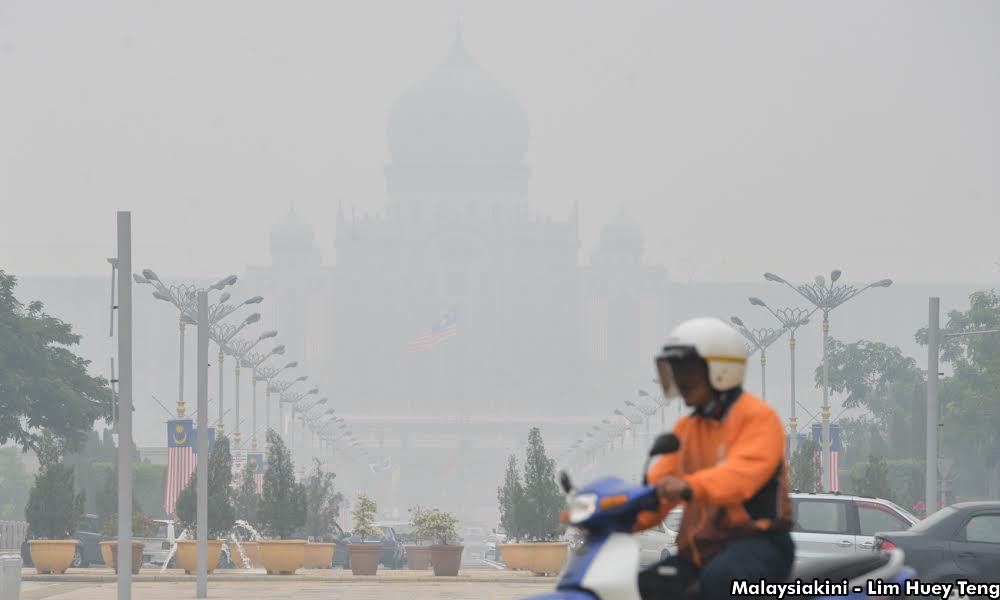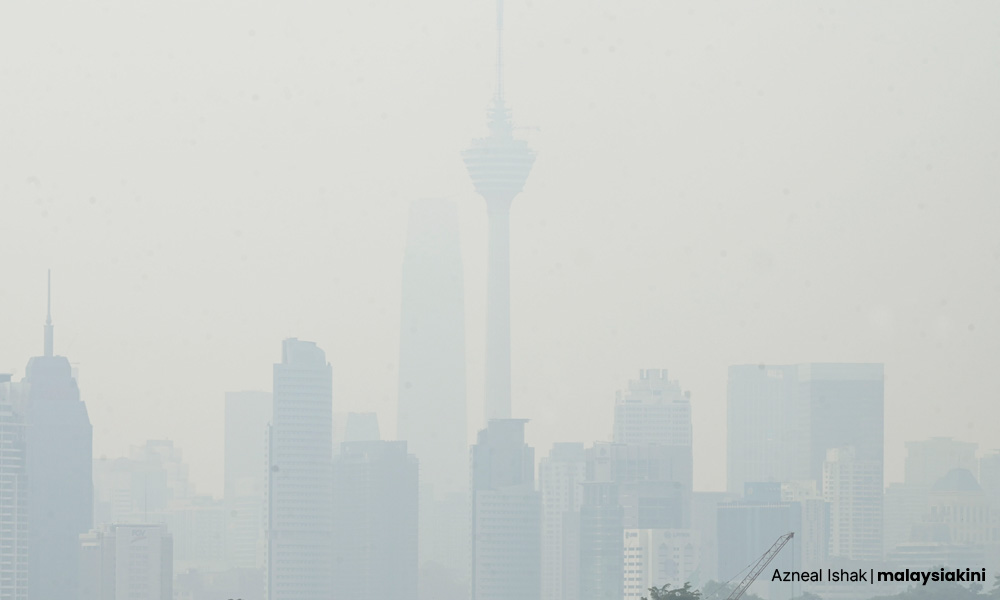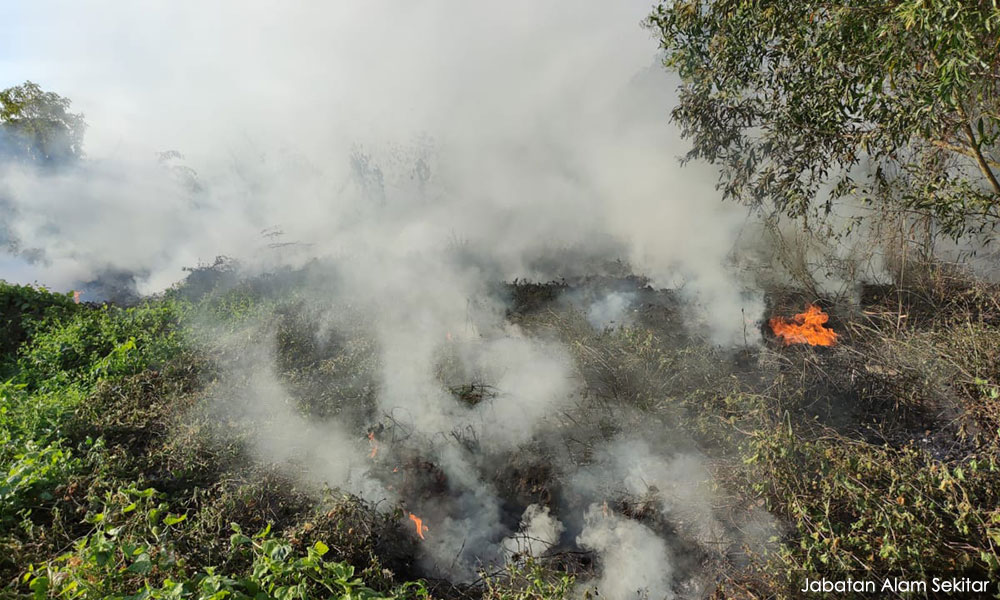The long-due Transboundary Haze law will not be realised if there is no bilateral agreement with the countries involved, said Natural Resources and Environmental Sustainability Minister Nik Nazmi Nik Ahmad.
Citing the transboundary air pollution agreement between the US and Canada, Nik Nazmi said that both countries had accepted each other’s jurisdiction and made it easy to enforce the law on both sides.
“For example, I mean that’s why science-based diplomacy matters, that’s how we deal with climate change, (through) science-based diplomacy.
“So, when you look at the US and Canada, they accept the jurisdiction of both countries and then make things easier for both nations to go about things right,” he said in a joint interview session with the media at Parliament.
The media agencies involved were Malaysiakini, Berita Harian, and Sin Chew.
Nik Nazmi also reiterated that the government is facing hurdles such as the method of legislation as well as the enforcement, implying that the law can just turn into a “symbol” without bilateral agreement with relevant countries.

He said this is to ensure that the law is not unilateral and can benefit the countries that sign the agreement.
“Like with Asean and all, it is still very much reliant on the member states’ governments and that is another challenge.
“That’s why I like how people have been exercising science-based diplomacy where we have scientific panels,” Nik Nazmi added.
In November last year, it was reported that the government is still open to legislating laws to criminalise acts causing haze in Malaysia.
However, Nik Nazmi stressed that it cannot be legislated until a workable solution can be found.
The minister had previously told Parliament that the transboundary haze law would not be tabled soon due to foreseeable implementation problems and that Putrajaya was also pursuing a diplomatic approach.
This prompted a response from environmentalists including Greenpeace, which slammed the government for not being serious in tackling transboundary haze pollution.

In 2014, Singapore enacted such a law but, as of today, no one has been charged.
The law’s proponents have argued that such a law was needed as a deterrence against entities involved in starting forest fires or open burning which contributes to haze.
Open burnings
On open burnings, Nik Nazmi said as many as 1,594 cases of such cases were recorded in Malaysia in just the first three months of this year, which are feared could contribute to air pollution and haze.
He said from January to March 25, Selangor recorded the highest number of cases at 323, followed by Malacca (192) and Johor (189).
He also said that through amendments to the Environmental Quality Act (Amendment) 2023, any offender carrying out open burning can be imposed a maximum fine of RM1 million compared to RM500,000 previously.
In addition, Nik Nazmi stated that other punishments include five years’ imprisonment and a fine of RM5,000 for repeat offenders, which is a new provision included in the amendments to the Act.

“We are imposing higher fines for offenders through the amendments to the Act, which have been approved by the Dewan Rakyat and are only awaiting approval at the Dewan Negara.
“If open burning is carried out in an uncontrolled manner, it can contribute to local haze, which will impact health and cause air pollution.
“This incident can worsen during hot and dry weather conditions to the extent of causing an increase in localised temperatures... I hope all landowners are more vigilant and closely monitor areas prone to fires as well as prevent encroachment,” he said.
Dry spell
Commenting on the current scorching weather, Nik Nazmi said that a total of 16 districts in the country have not received rain for more than 15 days, with the record set in Lahad Datu, Sabah at 29 days without a downpour.
Besides Lahad Datu, Papar in Sabah has also been “dry” without rain for 28 days.
He said other areas include Langkawi, Kedah; with 22 days without rain; Pasir Puteh, Kelantan (21 days); Kota Belud, Kota Kinabalu and Putatan, Sabah (19 days); Labuan (18 days); Jelebu and Port Dickson, Negeri Sembilan (17 days).
“Six more districts did not receive rain for 16 days, namely in Muar, Johor; Jeli, Kota Bharu and Kuala Kerai, Kelantan; Temerloh, Pahang as well as Chuping, Perlis.
“In addition, there are 41 districts at a cautionary status with maximum daily temperatures of 35 to 37 degrees Celsius, which are eight in Kedah; seven in Johor; six districts each in Negeri Sembilan and Pahang.
“Two districts each in Sabah and Sarawak as well as one district in Perak, namely Kuala Kangsar, Selangor (Sepang), Kuala Lumpur and Putrajaya,” he said.

Previously, the Malaysian Meteorological Department (METMalaysia) reported that there were two areas reaching heatwave status with maximum daily temperatures exceeding 37 to 40 degrees Celsius, namely Perlis and Hulu Perak, Perak.
Nik Nazmi said the hot and dry weather currently being experienced will gradually improve towards mid-April due to the monsoon transition phase, expected to occur from March 29 to May.
He said there is no data so far that Malaysia will face a Super El Nino this year by June, as per the study conducted by the Scientific Reports journal involving Southeast Asian countries, contrary to some research predictions for Southeast Asia.
“Any action taken following El Nino will be decided through the National Haze and Dry Weather Main Committee (JIJCKK) meeting chaired by me, based on existing guidelines should forecasts indicate the need for action down the line.” - Mkini




No comments:
Post a Comment
Note: Only a member of this blog may post a comment.